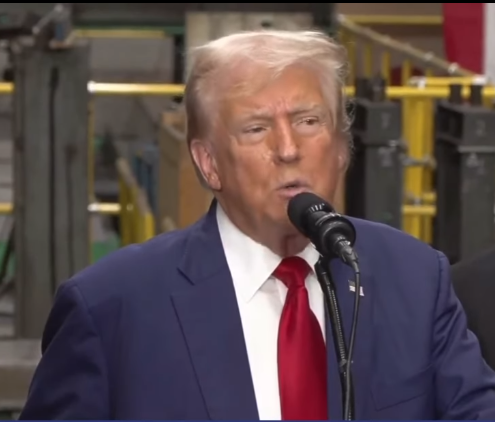
(Photo : Instagram)
- Trump's proposed tariffs could cost U.S. shoppers up to $78 billion annually, impacting various consumer product categories.
- The tariff, a tax paid by U.S. importers, would result in higher prices for consumers, affecting low-income families the most.
- The NRF predicts a 3.5% growth in holiday sales, but tariffs could impact this, especially with an additional 60-100% tariff on imports from China.
- The proposed tariffs could significantly impact the U.S. economy, potentially leading to a decrease in consumer spending, a slowdown in economic growth, and a potential trade war.
The recent proposal by presidential candidate Donald Trump to impose new tariffs on imports could potentially cost U.S. shoppers up to $78 billion in annual spending power, according to a study by the National Retail Federation (NRF).
The proposed tariffs would impact a range of consumer product categories, including apparel, toys, furniture, appliances, footwear, and travel goods. This would particularly affect items where China is a major supplier.
Consumers have become more frugal over the past couple of years, increasingly looking to limit expenses by curbing non-essential spending. This trend has hit sales at retailers and consumer goods companies in the United States.
Retailers rely heavily on imported products and manufacturing components so that they can offer their customers a variety of products at affordable prices, said Jonathan Gold, NRF's vice president of supply chain and customs policy.
However, the implementation of the import tariff could further exacerbate the impact on low-income families. The tariff, which is a tax paid by the U.S. importer, ultimately comes out of consumers' pocket through higher prices.
The Impact on Retail and Holiday Sales
Last month, NRF forecast holiday sales in America to grow as much as 3.5% to $989 billion from November to December, which is the slowest in six years. Trump's idea of a 10% universal tariff on imports from all foreign countries was floated in an interview with the Washington Post in August last year. He also mentioned in February that there would be an additional 60% to 100% tariff on imports from China.
The NRF study echoes similar sentiments expressed by other experts. American consumers could lose between $46-78 billion in spending power each year if new tariffs on imports to the United States are implemented, according to a new study released by the NRF.
A universal 10-20% tariff on imports from all foreign countries and an additional 60-100% tariff on imports specifically from China would impact apparel, toys, furniture, household appliances, footwear, and travel goods.
The NRF passionately advocates for the people, brands, policies, and ideas that help retail succeed. From its headquarters in Washington, D.C., NRF empowers the industry that powers the economy. Retail is the nation's largest private-sector employer, contributing $5.3 trillion to annual GDP and supporting more than one in four U.S. jobs - 55 million working Americans.
Global Trade and Economic Impact
The NRF study also highlights the potential impact of the proposed tariffs on the U.S. economy. The tariffs could lead to a significant increase in the cost of goods for consumers, potentially leading to a decrease in consumer spending and a slowdown in economic growth. This could have a significant impact on the retail industry, which relies heavily on consumer spending.
In addition to the potential economic impact, the proposed tariffs could also have a significant impact on the global trade landscape. The tariffs could potentially lead to a trade war, with other countries retaliating with their own tariffs on U.S. goods. This could lead to a decrease in global trade, potentially impacting the global economy.









